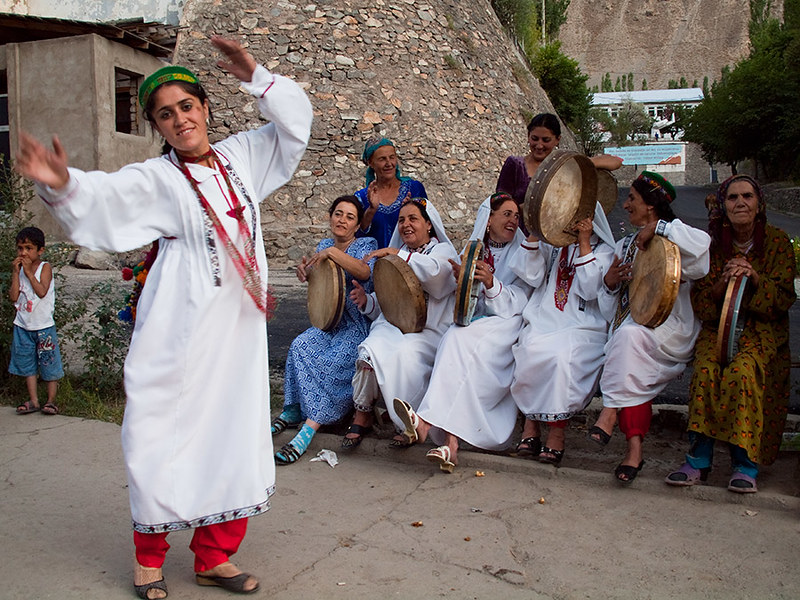Tajikistan's festival of the ancient peoples
Dushanbe rediscovers ancient festivities dating back to the earliest periods of earthwork. In them, some of the world's oldest settled communities commemorate forms of recognition of the forces of nature, with legends, decorations and rituals specific to each.
Dušanbe (AsiaNews) - In Tajikistan, the folkloric restoration of ancient festivals attributed to the proto-Indo-European peoples, identified as the ancestors of the Aryans after the migrations from Eurasia to the northern territories, is becoming increasingly popular. In these days the celebrations of four ancient celebrations begin, dating back to the first eras of land cultivation, those of Sada, Nawruz, Tirgon and Mekhron. They recall the forms of recognition and submission to the forces of nature, with legends, decorations and rituals specific to each one.
According to the director of the Russian-Tajik scientific research institute Rtsu, Olga Ladygina, interviewed by Asia-Pljus, the Tajiks "are one of the oldest sedentary peoples, with traditions linked to the cultivation of the land and very strong links with atmospheric conditions: frost and thaw, rains and dry periods on which sowing and harvests depend".
As in other cultures, many blessing and curse procedures are connected to these phenomena, attributing divine powers to the sun, fire, sky, air, water and earth, and the four festivals that are now renewed represent the succession of the seasons, according to rites dating back to 3-5 millennia ago.
The Ladygina underlines that "ancient traditions favor union and the strengthening of bonds in the nation, without insisting on superstitious submission". The festivals are proposed again "so that the new generations learn to recognize their roots, recognizing the processes of development and enrichment of culture without dispersing the original values".
The first Sada festival therefore dates back to 4 thousand years ago, and was still very popular in the Middle Ages, anticipating the new year of Nawruz. Sada is celebrated for 50 days and 50 nights before the spring equinox, with different calculations between the Tajik and Persian variants.
The term Sada means at the same time "sunset" and "dawn", to signify the cyclicality of cosmic events, starting from the current end of January. In the poem Šakhman of the medieval Persian Firdousi it is said that king Khušang had "discovered" fire while hunting a large snake, against which he had thrown a stone which, colliding with another, had caused the spark to arise, an original event of the work of the earth.
In the Persian and Tajik lands the "fire temples" were erected, and sacred circular bonfires were lit around the houses. The agricultural season began from Sada, after the winter break, thus celebrating Nawruz, a festival recognized by UNESCO as an intangible heritage of humanity, which is conventionally celebrated on March 21st, or on one of the preceding and following days with a great wealth of rituals and specific traditions. The clothes of the festival are very important, especially those of women, considering the great importance of the processing of fabrics in these lands of Central Asia.
In solemn guises, dances and songs dedicated to beauty and love are performed, which express hope in good health and a happy life. On these days, people clean and decorate their homes, give each other flowers and sweets, and gather for the seven-course Khavstin lunch with the best fruits and produce of the land. In the Pamirs the main dish is by far the most substantial, Bat with flour, milk and butter, a kind of thick polenta which is served in tabak, a special decorated wooden dish.
The festival of Tirgon, the "day of rain", was restored in 2023 with a special decree of President Emomali Rakhmon, and its first major celebration is expected in early July to ask the gods not to leave the earth without water, as has happened in recent years. Possible measures to address water shortages are being discussed in Dušanbe, and in the capitals of neighboring states, and among these Tajikistan begins with supplications to the ancient Persian deities.
Photo: Flickr / Evgeni Zotov







.png)










